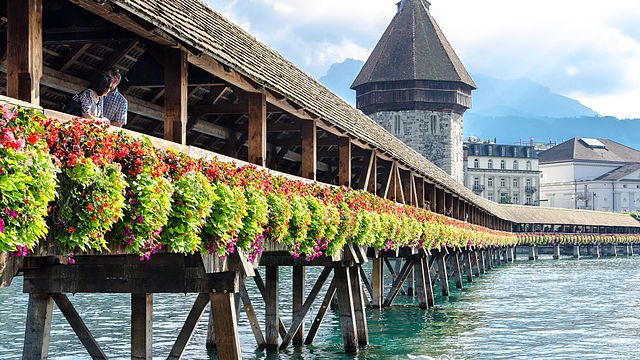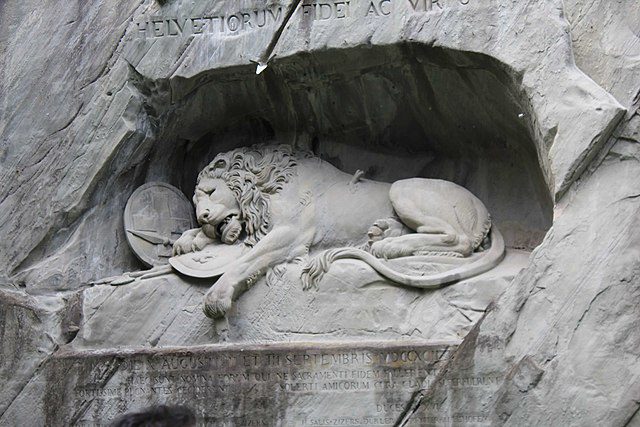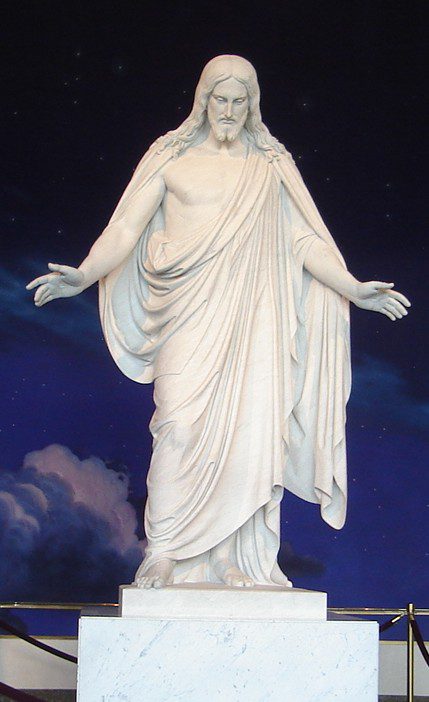
Well, our stay in the Berner Oberland has finally come to an end. I’ll do a retrospective on it in a day or two, when I get a chance. (I just know that everybody out there is dying to read my travelogue!) In self-justification, I point out that this blog sometimes functions as a kind of journal for me.
We’re in Kloten now, near the Zürich Airport, waiting for our various flights in the morning. I actually have a missionary connection here in Kloten, too: I spent some time here as an assistant zone leader and then as a zone leader. One of my companions in Kloten has remained a friend and even a colleague ever since, and he and three other colleagues have recently published a book with the Interpreter Foundation. Moreover, I have a (to me) quite faith-promoting story to tell out of my time in Kloten, which I may or may not ever relate on a public blog.
Someone asked me, a couple of days ago, how many convert baptisms I had on my mission. I responded that I had baptized my father on the evening that I was set apart as a missionary — which was a wonderful and life-transforming thing for me — but that, otherwise, I had had no convert baptisms on my mission.
Living, as they do, in a very stable, highly educated, extremely prosperous, and largely crime-free country that hasn’t been involved in a war for roughly two centuries or so and whose landscape ranges from beautiful to spectacularly beautiful, it’s not surprising that the Swiss are comfortable. (Some critics say — though I probably wouldn’t — that they tend to be a bit complacent.) They’re not necessarily seeking to make big changes. Nor, on the whole, are they religiously anguished nor energetically searching for new spiritual paths.
So serving as a missionary in German-speaking Switzerland, while it had its substantial personal rewards and while I am passionately in love with the country, posed some challenges. On the whole, people just weren’t interested. We rarely got in doors, rarely taught lessons, and only very rarely got beyond first or second lessons.
I would have to catch myself from time to time, realizing that I hadn’t seriously thought in weeks of seeing a convert baptism. My job was simply to get up every morning, get out on the doors by 9 AM, ring doorbells all day, have the doors shut in my face, and repeat the same general plan the next day, as well. Rinse and repeat.
About midway through my mission, we were given a new edition of the general Church missionary handbook. One line in it provoked considerable mirth among the missionaries. As I recall, it read almost exactly as follows, stating a goal for us: “Find a golden family each week; baptize a golden family each month.”
That might have fit Mexico or Brazil at the time, but, in Switzerland, finding a single “golden” individual over the course of two years would have been a satisfying and not necessarily likely achievement.
One day, while I was serving in the mission home at Pilatusstrasse 11 in Zürich, my mission president, Edwin Q. Cannon, called me into his office. He had just received some sort of letter or newsletter from his home neighborhood in Salt Lake City. “Brother Peterson,” he said to me rather wistfully, “do you realize that the Ensign Stake mission out-baptized us last year?” (That, of course, would have been a local, part-time missionary effort in the very headquarters city of the Church of Jesus Christ of Latter-day Saints, as opposed to our admittedly relatively small force of full-time missionaries in Germanic Switzerland.)
I should mention, by the way, that President Cannon was one of the kindest and best men I’ve ever known.* And I don’t say that lightly. (I’m happily aware that many missionaries hold their mission presidents in very high esteem and affection.) I’ve heard of other mission presidents who have been strict by-the-rules types. President Cannon, however, was not. He didn’t lay down a lot of rules. He trusted us and he expected us to serve faithfully, and I think that, overwhelmingly, we tried not to disappoint him. (I did let him down once — I can’t even remember what the issue was — and I vowed that it would never, ever, ever happen again. He didn’t yell at me or rebuke me. It might have been easier if he had. He was simply, gently, disappointed.) Moreover, his wife, Janath Russell Cannon, was no less impressive.

(Wikimedia Commons public domain photo)
But back, though, to my statement the other day that I had no convert baptisms in Switzerland. After saying that, I quickly added that such an answer was too simple. Let me now elaborate on that just a bit by mentioning a few things in no particular order:
Anecdote 1: Driving today from the home near Interlaken where we had been staying to our hotel near the Zürich Airport, we dropped through the pleasant town of Luzern. Unfortunately, the rain was coming down by the bucket for much of our time there, with only short interruptions. So we abandoned the idea of going up Mount Pilatus or even strolling along the wonderful Lake of the Four Forest Cantons. We contented ourselves merely with briefly visiting the beautiful Kapellbrücke and Bertel Thorvaldsen’s famous Löwendenkmal, having dinner near it in order to escape the downpour, and then driving northward on our way to Zürich. (Thorvaldsen, incidentally, is the Danish sculptor who created the original Christus statue that is so familiar to Latter-day Saints, as well as the statues of the apostles that are now, in precise marble copies, featured in the visitors center of the Rome Italy Temple.
Right near the Löwendenkmal, though, is a high-end souvenir shop where, many years ago, the missionaries working in Luzern met a young American girl who, to further her German-language studies, had taken a job behind the counter so that she could live in Europe. My companion and I were stationed at the time in Zug and living in Oberägeri (whereby hangs its own tale), but the ward that we attended and the district to which we belonged were located in Luzern. So we came down every weekend to work in Luzern and attend services there, staying over on Saturday nights and sometimes on Friday nights, and we were deeply involved in teaching her. She was so golden a contact, and gave such perfect “Brother Brown” answers (which is to say, almost as if they came right out of the missionary training material of the time), that I actually sometimes wondered whether the Luzern missionaries weren’t pulling our leg with some elaborate prank. But they weren’t, and we were happy to attend her baptism. She later came and finished her degree at BYU and married some lucky guy in the temple.

(Wikimedia Commons public domain image)
Anecdote 2: Later, while I working in the mission home, one of the German-language Swiss television stations decided to do a “magazine” segment on Latter-day Saint missionaries. Another elder and I were featured in what eventually aired. Some time thereafter, a young man and woman who had seen the segment contacted the Swiss mission office, expressing interest in learning more about the Church. They didn’t seem outwardly promising — and not merely because his hair reached the small of his back and his beard was almost as long. They had been living together, unmarried. But they eagerly accepted the Gospel, moved apart, received baptism, and — I don’t think that this would happen very often today — he eventually served what was apparently a very successful mission to an English-speaking country.
Anecdote 3: One day, while my companion and I were tracting in the Interlaken area, I was deeply surprised to see a woman answer our ringing of her doorbell . . . and to have a powerful internal voice tell me, not precisely in words but still very clearly, “She’s going to be baptized.” And, in fact, she let us in the door. We introduced ourselves, set up an appointment, returned, and taught her a lesson. Perhaps — I can’t quite recall — we even returned later to teach her a second lesson.
And then she told us that she wasn’t interested.
I was puzzled by that, since the impression had been so distinct and so unexpected. Come summer, my companion and I were transferred from the area, which was (and is) a major tourist destination. That was that.
In the fall, a new missionary pair were assigned to the area. Looking through our record books, they saw the woman’s name and address and decided to look her up. She consented to be taught further lessons and was eventually baptized. Roughly a year after our first contact with her.
I’ve thought about this experience many times since. It seems pretty clear to me that we can receive genuine inspiration and still not know or understand the details, that we can even have true intuitions about the future (as happened to me once in Kloten, and has happened a number of times since) and yet incorrectly visualize how those intuitions will be fulfilled. (The latter has happened to me on several occasions.) As the apostle Paul expressed it in 1 Corinthians 13, in this life “we see through a glass, darkly.”
* I only just now noticed a very surprising feature of the article about Edwin Q. Cannon on Wikipedia.
(To be continued.)
Posted from Kloten, Switzerland












